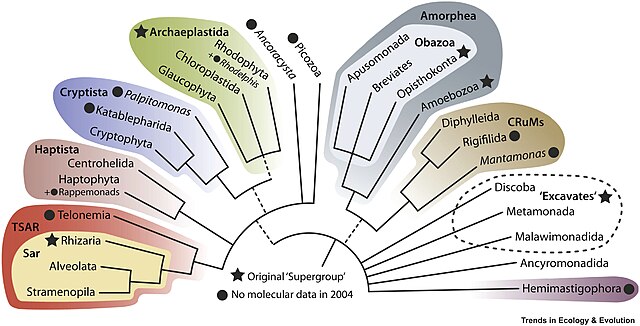The dinoflagellates are a monophyletic group of single-celled eukaryotes constituting the phylum Dinoflagellata and are usually considered protists. Dinoflagellates are mostly marine plankton, but they also are common in freshwater habitats. Their populations vary with sea surface temperature, salinity, and depth. Many dinoflagellates are photosynthetic, but a large fraction of these are in fact mixotrophic, combining photosynthesis with ingestion of prey.
Dinoflagellate
Longitudinal (l.f.) and transverse flagellum (t.f.); sack pusule (s.p.); nucleus (n).
1. Ornithocercus; 2. diagram; 3. Exuviaella; 4. Prorocentrum; 5, 6. Ceratium; 7. Warnowia; 8. Citharistes; 9. Polykrikos
Dinophytic microalga isolated from sediments of Amur Bay
A protist or protoctist is any eukaryotic organism that is not an animal, land plant, or fungus. Protists do not form a natural group, or clade, but are a polyphyletic grouping of several independent clades that evolved from the last eukaryotic common ancestor.
Protist
Phylogenomic tree of eukaryotes, as regarded in 2020. Supergroups are in color.
Goldfuss' system of life, introducing the Protozoa within animals.
John Hogg's illustration of the Four Kingdoms of Nature, showing "Regnum Primigenum" (Protoctista) as a greenish haze at the base of the Animals and Plants, 1860








